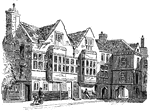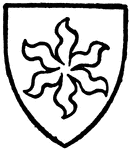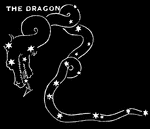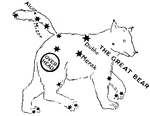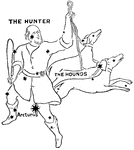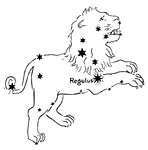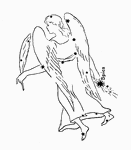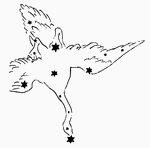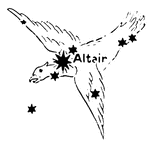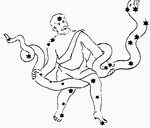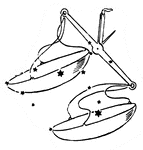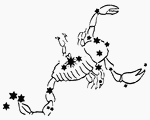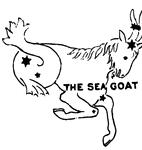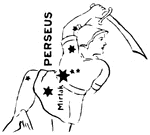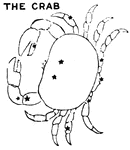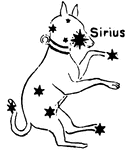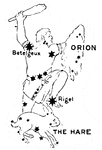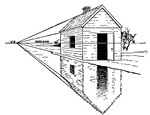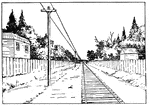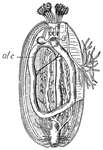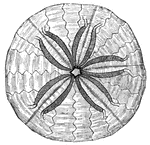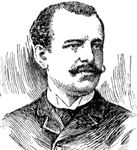
Jean De Reszke
(1850-1925) Polish operatic singer. Renowned internationally for the high quality of his singing and…
Morning Glory Bud
The flower part of this bud is twisted at its point end in a spiral manner. This bud is partially closed.
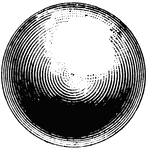
Sphere
A sphere is a solid bounded by a uniformly curved surface, every point of which is equally distant from…

Fencing
Prime parry. The thrust in prime for the left side of the body is parried by the act of striking…

Parallel-veined Leaf
This type of parallel-veined leaf has veins running from the base of the leaf to the point.
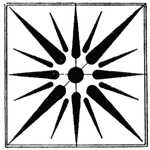
Greek star
Uraniscus, the star-like decoration of a Greek coffer ceiling. From the Propylea in Athens. Gold on…

Starfish
The common starfish is a five rayed star. The central body is called the disk and the arms are the rays.
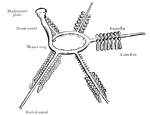
Starfish
The common starfish is a five rayed star. The central body is called the disk and the arms are the rays.…
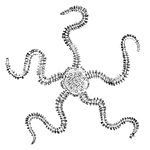
Brittlestar
The arms of the brittlestar are more flexible than those of the starfish. They move by lateral movements…
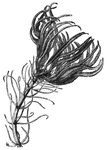
Sea Lily
An ancient crinoid, sea lilies are flowerlike, with branching arms surrounding the central mouth.

Stone Lily
An ancient crinoid, stone lilies are flowerlike, with branching arms surrounding the central mouth.
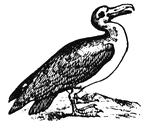
Albatross
A large marine swimming bird. The bill is straight and strong, the upper mandible hooked at the point…
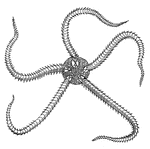
Sea-star
Sea-stars are Echinoderms. The order Ophiuroides is closely related to starfishes. The arms of sea stars…
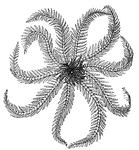
Crinoid
Crinoids are Echinoderms. They are distinguished by the fact that they are fixed, during the whole or…

Crinoid
Crinoids are Echinoderms. They are distinguished by the fact that they are fixed, during the whole or…
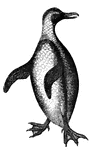
Penguin
Penguins are adopted for a completely aquatic life. The body is boat-shaped, the neck long, and legs…

Facial Angles
The facial angle is an angle formed by two imaginary lines; one drawn fom the most prominent part of…

Interior View of Fort Beauregard
Fort Beauregard, at Bay Point, on the point opposite Fort Walker, was built of sand and palmetto logs…

Discovery of a Confederate Battery at Messech's Point
The activity of the Confederates on the Potomac and the confluent rivers was almost incredible. In one…

Company H
"Successful charge of Company H, first Massachusetts regiment (Captain Carruth), on a Confederate redan…
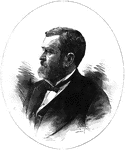
Ulysses Grant
General Grant, eighteenth President of the United States, born at Point Pleasant, Clermont County, Ohio,…
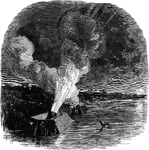
Siege of Island
"Siege of Island No. 10, on the Mississippi River- night bombardment by the Federal mortar boats, ten…

Bombardment of Island No. 10
"Bombardment of Island No. 10 and the fortifications opposite, on the Kentucky Shore, by the Federal…

First naval battle
"First naval battle in Hampton Roads between the Confederate iron-plated steamers Merrimac, Yorktown,…

